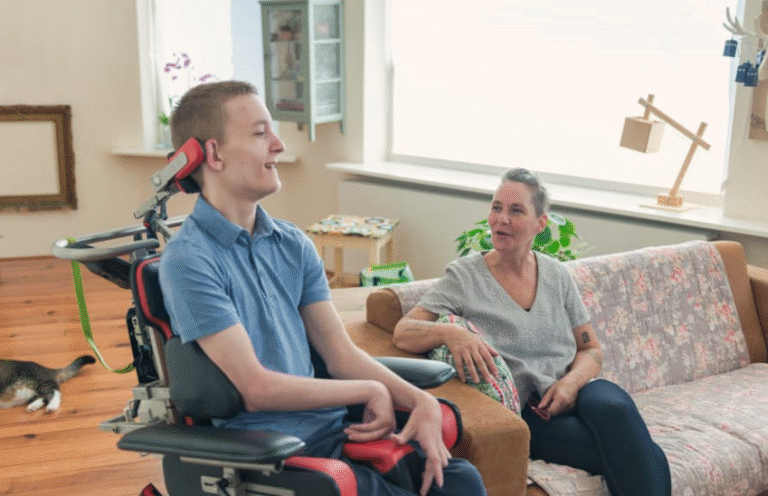How to Identify Bed Bug Symptoms Before an Infestation Spreads
Bed bugs are small, elusive insects that can cause major problems if left undetected. Their ability to hide in tiny crevices and reproduce quickly makes them a common nuisance in homes, hotels, and apartments around the world. Early detection is crucial to preventing a full-blown infestation. In this article, we will explore how to identify bed bug symptoms before the problem escalates, helping you take action quickly and effectively.
What Are Bed Bugs?
Bed bugs are tiny, reddish-brown insects that feed on the blood of humans and animals. Adult bed bugs are about the size of an apple seed and are flat and oval-shaped. They are nocturnal, which means they are most active at night, usually while their hosts are asleep. Because of their size and hiding abilities, they can go unnoticed for weeks or even months.
Why Early Detection Matters
Early detection of bed bug symptoms ( væggelus symptomer ) can make the difference between a minor inconvenience and a costly extermination process. If left unchecked, bed bugs can spread throughout your home, hide in walls and furniture, and even travel on clothing or luggage. Addressing the issue early can prevent the infestation from spreading and save you both time and money.
Common Bed Bug Symptoms to Watch For
Knowing what to look for is key to catching an infestation in its early stages. Here are the most common bed bug symptoms:
1. Unexplained Bites
One of the first signs of bed bugs is unexplained bites on your skin, especially after sleeping. These bites often appear in a line or cluster and can be itchy or inflamed. They are most commonly found on exposed areas of the body such as the arms, legs, neck, and face. Unlike mosquito bites, bed bug bites usually appear in a pattern and may not be immediately painful.
2. Blood Stains on Sheets
After feeding, bed bugs may leave behind small blood stains on your bed linens or pillowcases. These stains are often red or rust-colored and may be accompanied by dark fecal spots (more on that below). If you notice any unexplained staining on your bedding, it could be a sign that bed bugs are present.
3. Dark or Rusty Spots on Mattresses and Furniture
Bed bugs excrete waste that looks like tiny black or brown spots. These fecal stains can be found on mattresses, box springs, bed frames, walls, and upholstered furniture. Over time, these spots can build up and become more visible. If you see these tell-tale marks, especially around seams and folds of mattresses, it’s time to investigate further.
4. Shed Skins and Eggshells
As bed bugs grow, they shed their skins (exoskeletons), which can accumulate in areas where they hide. You may also find tiny eggs or eggshells, which are white and about 1mm in size. Look for these signs in cracks, mattress seams, baseboards, and behind headboards. The presence of these materials is a clear indicator of a breeding bed bug population.
See also: Why ABA Billing Services Are Essential for Patient Satisfaction and Financial Health
5. A Musty Odor
In severe infestations, you may notice a strong, musty odor. This smell comes from the pheromones that bed bugs release when they are disturbed. While it may not be noticeable in small numbers, a strong smell can indicate a larger problem.
Where to Look for Bed Bugs
Bed bugs are expert hiders. They can live in a variety of places, not just in your bed. Here are the most common hiding spots:
- Mattress seams and tufts
- Box springs and bed frames
- Behind baseboards and wallpaper
- Inside electrical outlets
- Under carpets and rugs
- In drawers and nightstands
- Inside cracks in furniture
Inspect these areas closely if you suspect bed bug symptoms in your home.
Tools for Detecting Bed Bugs
You don’t need professional equipment to identify bed bug symptoms, but certain tools can help:
- Flashlight: Helps illuminate dark hiding spots.
- Magnifying Glass: Useful for spotting small eggs or skins.
- Credit Card or Flat Tool: Helps check seams and cracks.
- Sticky Traps or Bed Bug Interceptors: Can be placed under bed legs to catch bugs and monitor activity.
Using these tools can aid in a thorough inspection and provide evidence of a problem before it worsens.
What to Do If You Suspect Bed Bugs
If you discover any bed bug symptoms ( væggelus symptomer ), act quickly:
- Confirm the Infestation: Try to capture a bug or take clear photos of the symptoms.
- Clean Affected Areas: Wash bedding, linens, and clothes in hot water and dry them on the highest setting.
- Vacuum Thoroughly: Focus on mattresses, baseboards, furniture, and flooring. Dispose of the vacuum bag immediately after.
- Use Mattress Encasements: These zippered covers trap bugs inside and prevent new ones from entering.
- Consult a Professional: Bed bugs are difficult to eradicate completely without professional treatment. Pest control experts can assess the situation and recommend appropriate solutions.
Preventing a Bed Bug Infestation
The best way to deal with bed bugs is to prevent them from entering your home in the first place. Here are some simple tips:
- Inspect Secondhand Items: Avoid bringing in used furniture or mattresses without a thorough check.
- Be Cautious When Traveling: Check hotel beds and keep luggage off the floor. When returning home, wash and dry travel clothes immediately.
- Seal Cracks and Crevices: Prevent bed bugs from hiding in walls or furniture by sealing openings.
- Regularly Clean and Declutter: A clean and tidy home reduces hiding spots and makes early detection easier.
Conclusion
Catching an infestation early starts with recognizing the bed bug symptoms before they spread. Unexplained bites, stains on bedding, dark spots, and a musty smell are all potential red flags. Regular inspection, awareness, and prompt action can protect your home from a full-scale invasion. If in doubt, don’t hesitate to contact a professional pest control service. Early detection is not just a smart move—it’s your best defense.






